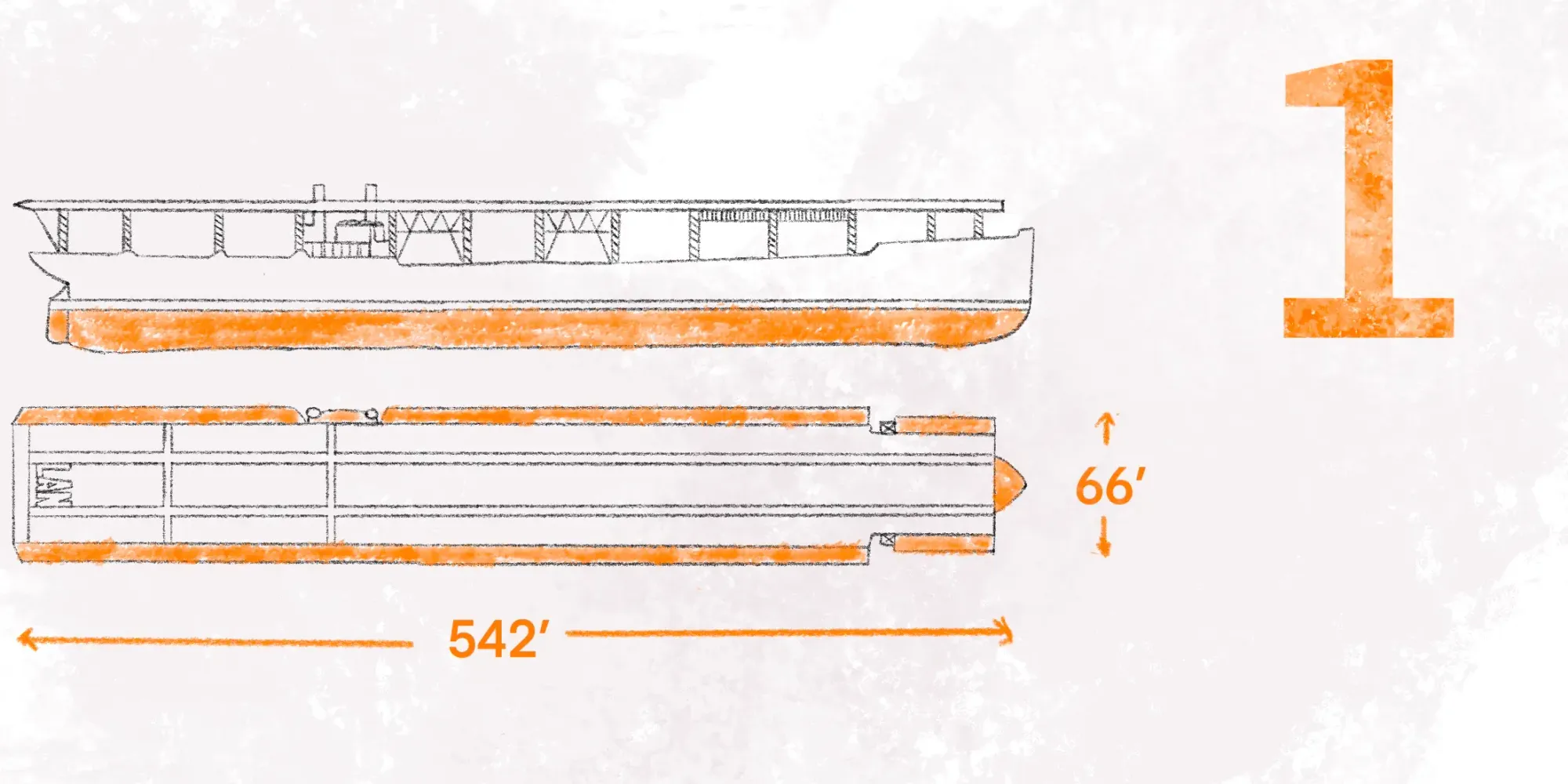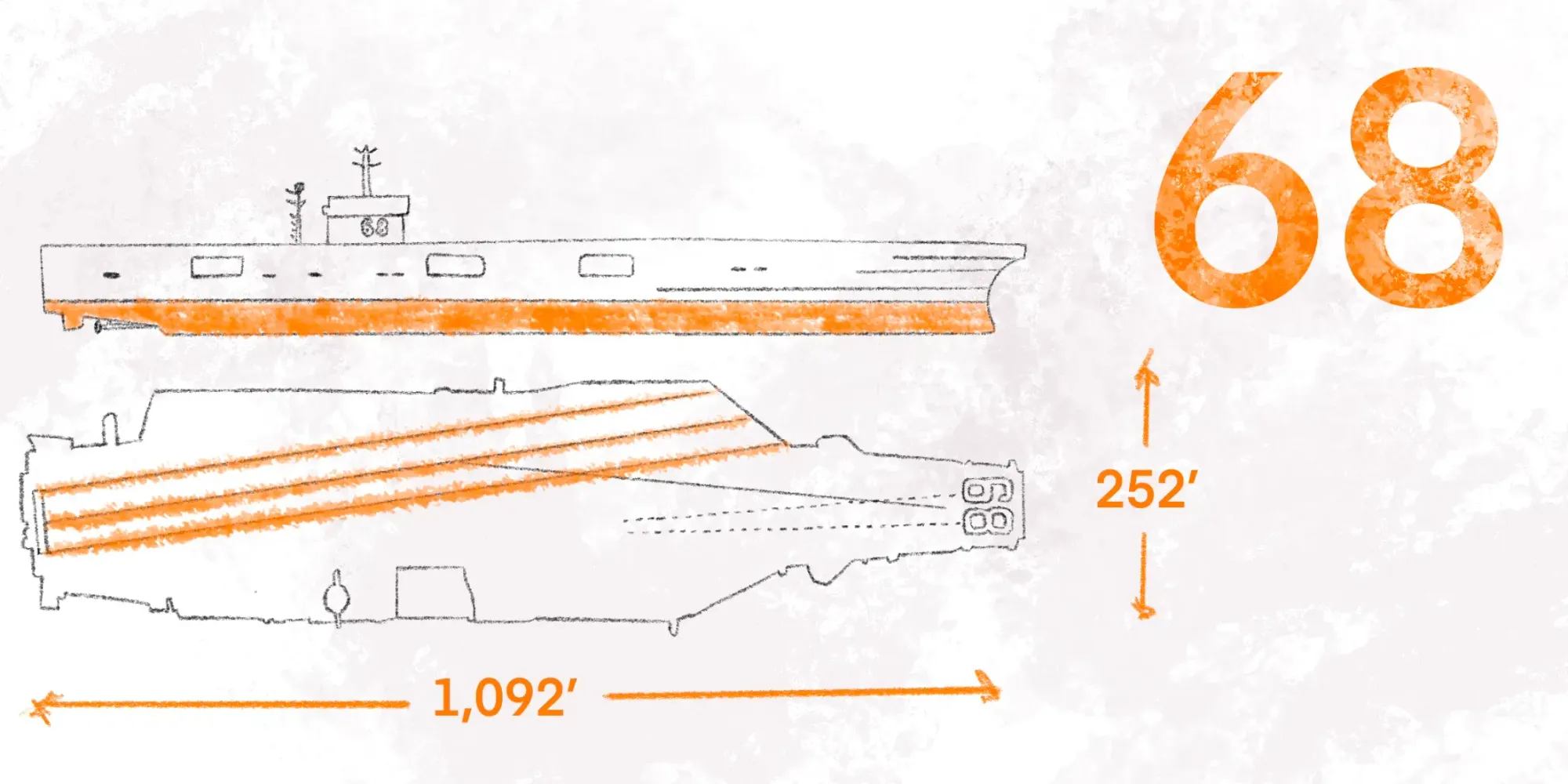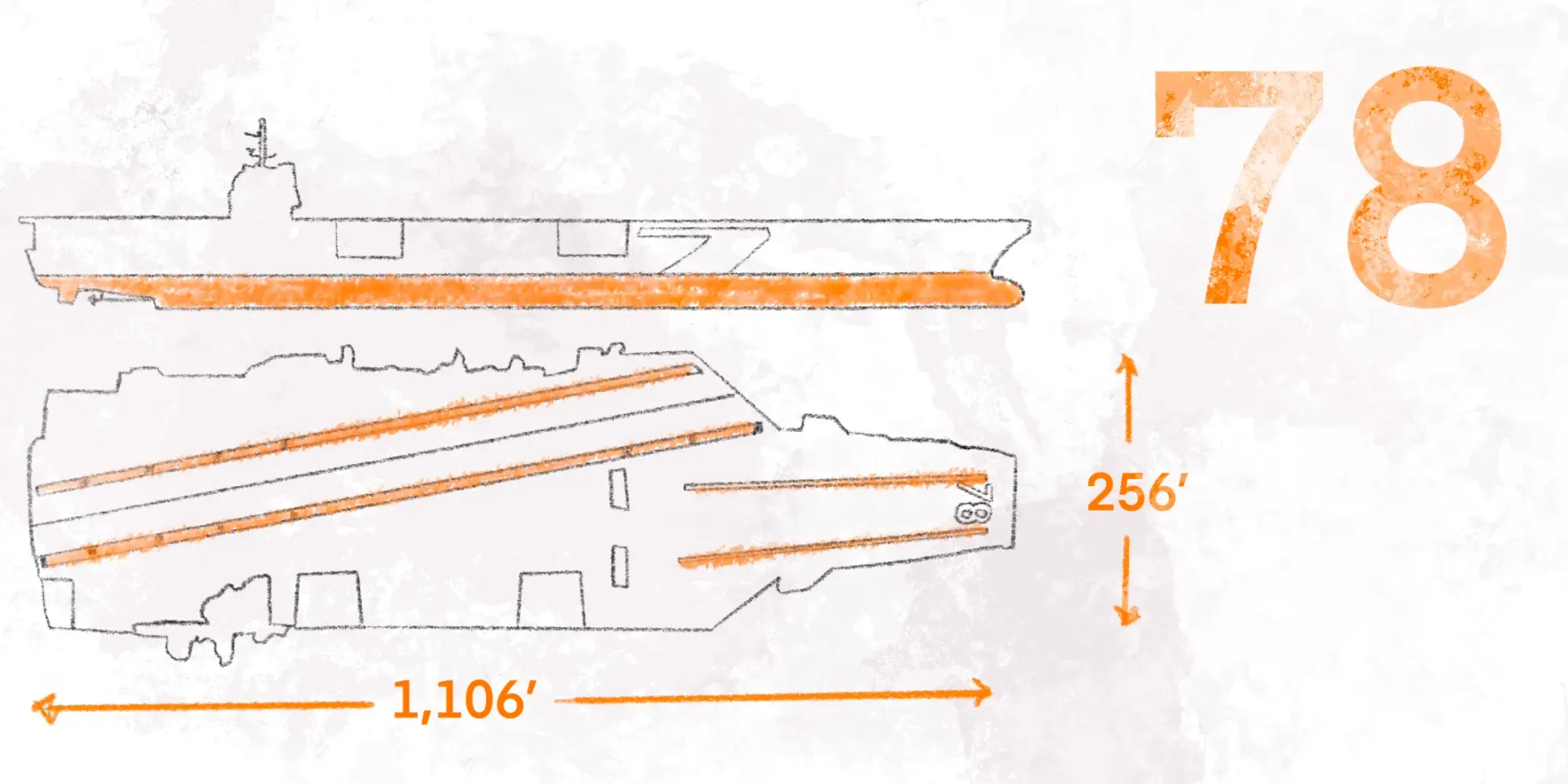EExplained: Aircraft Carriers
How big are aircraft carriers, anyway?

Once upon a time, the Eiffel Tower at 1,083 feet tall was the tallest and most beautiful mega-structure in all of the world.
Fast forward a century and Dubai came along and erected the Burj Khalifa at 2,716 feet, securing its crown as the tallest structure in the world.
But does size really matter? Every woman I’ve ever slept with would say yes but I’d say it’s actually very complicated and requires some context and nuance and you should never compare yourself to others and honestly 5 inches is average look it up.
But when it comes to aircraft carriers, bigger is always better.
The Past: USS Langley

The USS Langley was the first ever American aircraft carrier which was converted from a cargo ship, the USS Proteus.
USS Langley stats:
- Length: 542 feet
- Width: 66
- Max speed: 16 knots
- Aircraft: 36
Just under 500 sailors were required to operate the Langley and its cutting-edge “tech” was limited to carrier pigeon roost located on the stern of the ship between the two 5-inch guns.
The Langley had 1 elevator to move aircraft and 1 catapult to launch them off the bow. Even still, it was definitely a marvel for its time that laid the path for innovation to come.
The Now: The Nimitz Class

Carriers today almost resemble nothing of their ancestral first editions. Double in almost every category—size, length, number of aircraft on board—modern-day carriers are a sight to see.
For comparison, here’s a breakdown of the current Nimitz class:
- Length: 1,092 feet
- Width: 252 feet
- Max speed: 30+ knots
- Aircraft: 85-90
The Nimitz class was the first real “nuclear class” of carriers, where multiple nuclear-powered aircraft carriers were developed. Every Nimitz class carrier is powered by two nuclear reactors which subsequently power 4 propellers.
Aircraft carriers of old had only a single runway for launching and recovering. Nowadays both the Nimitz and Ford-class carriers can launch multiple aircraft at the same time while managing the recovery of returning aircraft as well. A launch and recovery of an aircraft is known as a sortie.
The Nimitz class was record-breaking in its 120 sortie-per-day ability, being able to do double that during wartime.
Now operating with a crew of over 5,000, the Nimitz class of aircraft carriers makes the Langley look like a 2015 Hillary rally.
The Future: The Ford Class

As it stands today, only one Ford-class carrier has been produced: the USS Ford. It’s the most technologically advanced ship yet, really bringing the carrier air wing into the 21st Century.
The Ford is also the largest class of ship ever built:
- Length: 1,106 feet
- Width: 256 feet
- Max speed: “in excess of 30 knots” aka classified
- Aircraft: 75+
So how does the Ford class stack up on paper? It can handle 160 sorties per day with a 270 surge capability. That’s a 33% increase in capabilities.
This can be partly attributed to the increase in flight deck space as well as improved efficiency for support operations like maneuvering aircraft to and from the flight deck.
But one of the biggest changes from the Nimitz to Ford? EMALS: Electromagnetic Aircraft Launch System—or a big ass magnet that shoots the aircraft off with less energy and a quicker recovery rate.
Check, Please
As you’d imagine, aircraft carriers aren’t cheap. Which probably explains why almost every country has one.
But maybe the reason we’re upgrading to the Ford class is that they’ll be more affordable?
Well… the Ford class of carriers cost around 13 billion per ship, while the Nimitz was a measly 10 billion, a 30% increase in cost per unit.
Honestly, not too much more than our monthly subscription to Ukraine.
